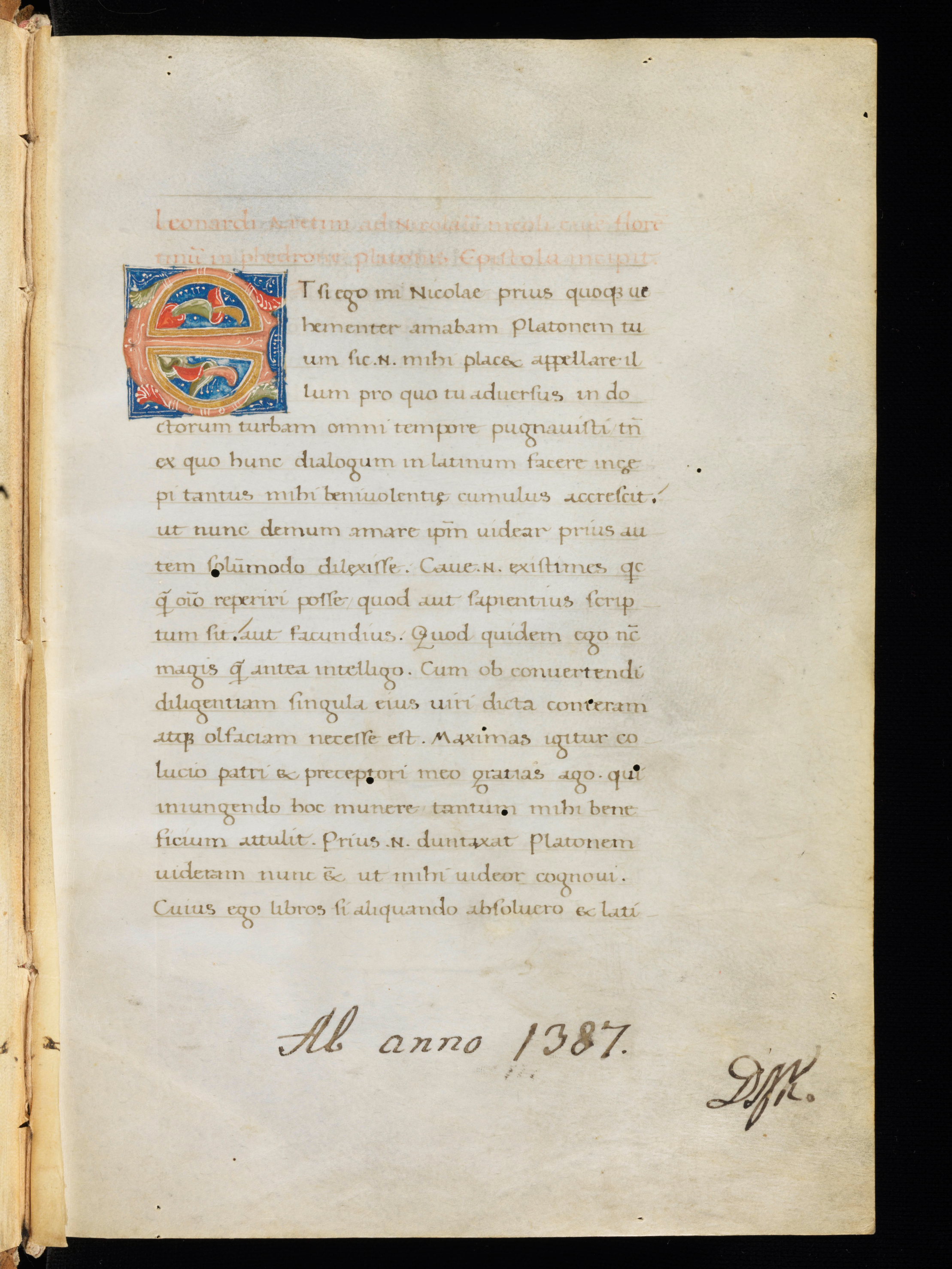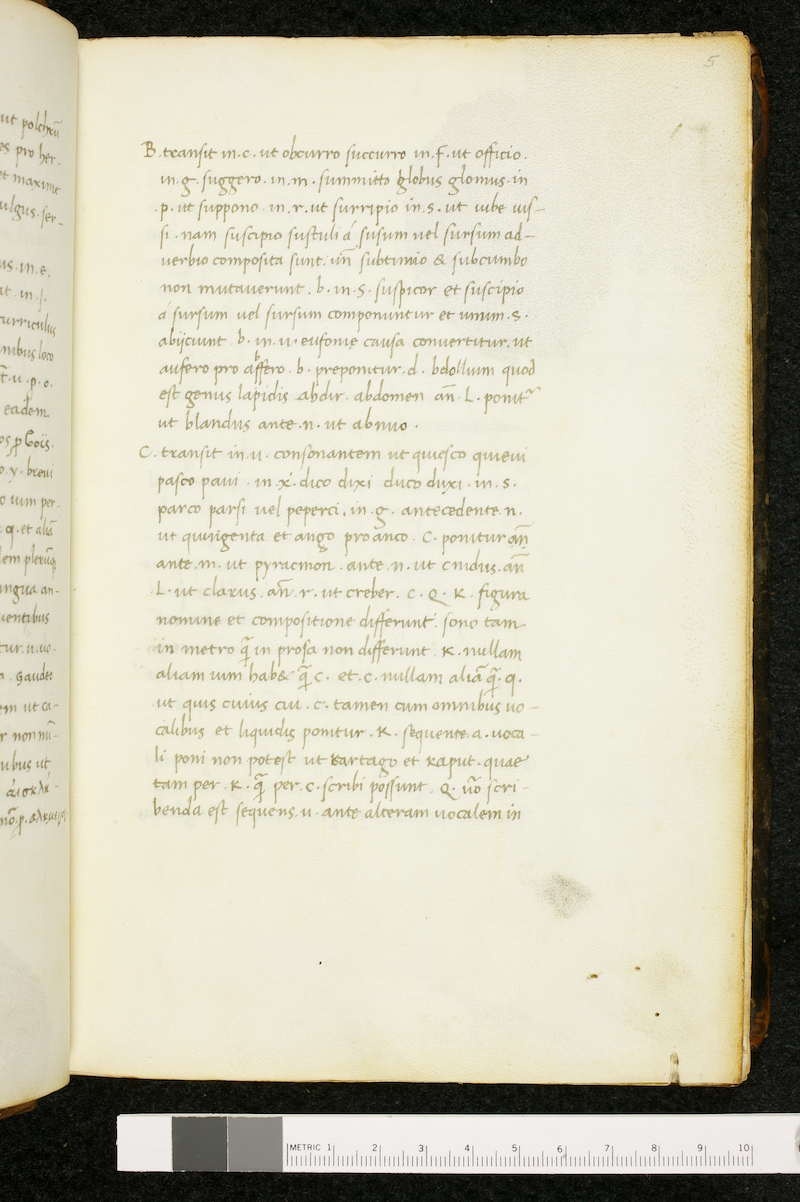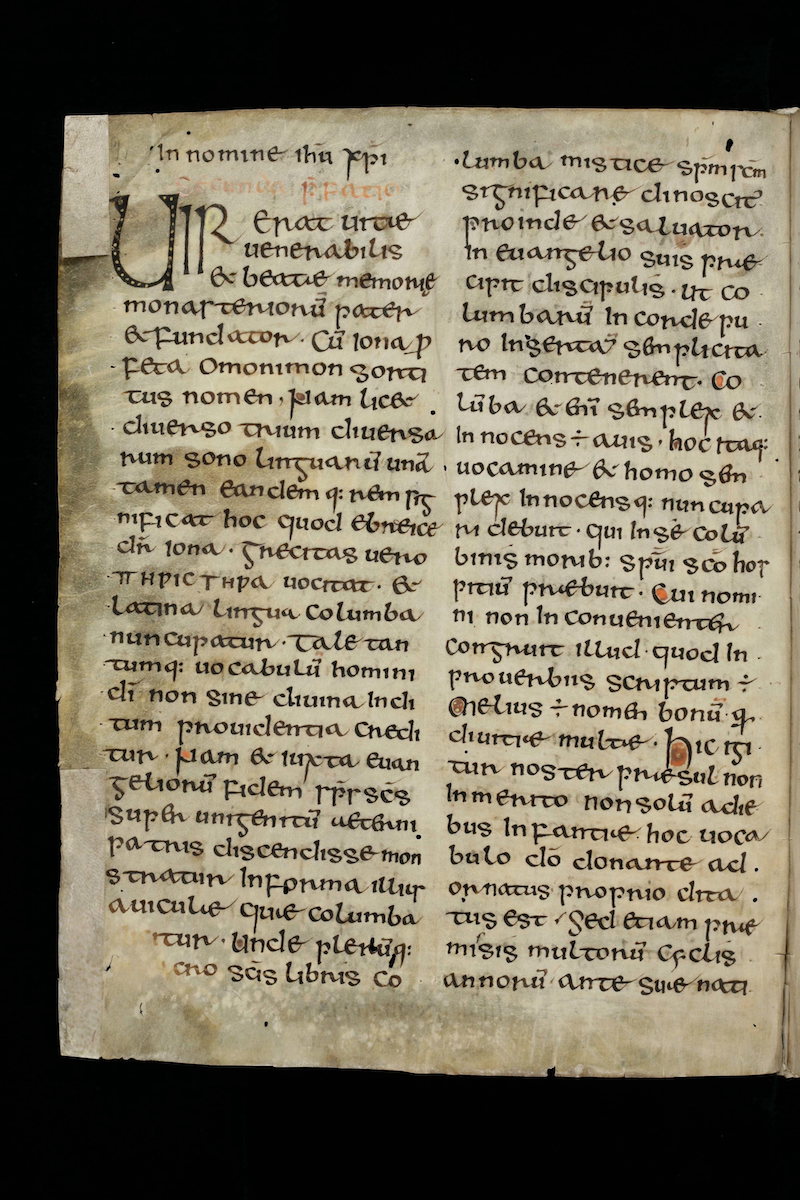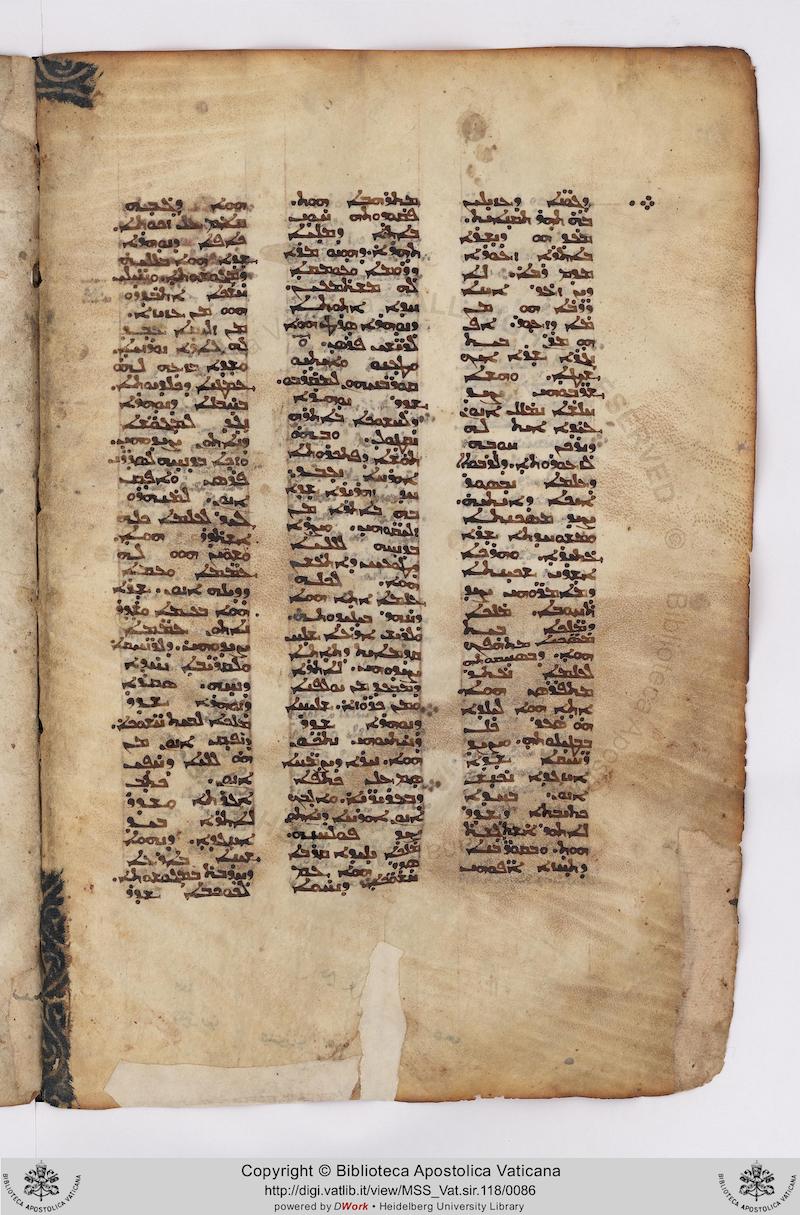
Humanist Minuscule, 15th century
-
Title
Plato, Phaedo, translated by Leonardo Bruni -
Text
Letter of Leonardo Bruni to Niccolò Niccoli, Epistula communis ad libros omnes Platonis -
Language(s)
Latin -
Writing System
Roman -
Script(s)
Humanist Minuscule -
Country
Switzerland -
City
Cologny -
Repository
Fondation Martin Bodmer -
Shelf Mark
137, fol. 1r -
Century
15th century -
Year Range
1400-1500 -
Place Of Origin
Italy -
Bibliography
Elisabeth Pellegrin, Manuscrits latins de la Bodmeriana (1982), 330-331.
-
External Facsimile
This manuscript of Leonardo Bruni's translation of Plato, with prefatory letter from Bruni to Niccolò Niccoli, was written by a scribe named Marcus Speegnimbergensis – probably from Spelimbergo, near Venice. The script is a clear Humanist minuscule and the layout is typical of the Humanist emulation of Carolingian page aesthetics. However, unlike the manuscripts written by the inner circle of Florentine Humanists, this manuscript bears numerous signs of having been written by a scribe steeped in Gothic habits, which he has not fully been able to purge for his Humanist endeavor.
The spare, spacious page, with single-column layout, ample space between lines, careful word-spacing, and a single foliate initial are typical of the Humanist reinvention of Carolingian mise en page. But the ruling, although faint, is more visible than it would be in a real Carolingian manuscript. The first line of writing starts below the top ruled line rather than above it, and the letters for the most part float slightly above the ruled lines rather than sitting directly on them. Those features of the relationship of writing to ruling both developed after the Carolingian period.
Similarly, although the letterforms are consistently those of Caroline Minuscule, a few features betray Gothic habits. Single is are dotted in several instances, which is a late-medieval development. Round s is used at word-end where Caroline Minuscule (and the most careful Humanist Minuscule) would use only tall s. Here and there, adjacent letters are squashed together in a way that suggests the Gothic convention of allowing adjacent letters to share a stroke. There are more abbreviations than would be seen in a Carolingian manuscript of this grade. The scribe generally capitalizes proper names and the first words of sentences, both modern features that were relatively new developments at the time this manuscript was written.
Most word-breaks at line-end are marked by a long, low hyphen, apparently by the scribe of the text. In a few places, it is very hard to tell whether the hyphen is present. The transcription reflects our best judgment about whether a hyphen is really there in each instance. (In accordance with our conventions, hyphens that are present are transcribed, and a hyphen is provided in parentheses where there is a word break and the scribe did not hyphenate.)
Acknowledgements: Described by Carin Ruff
Transcription
1 leonardi Aretini ad Nicolau(m) nicoli ciue(m) flore(n)(-)
2 tinu(m) in phedrone platonis Epistola incipit.
3 ETsi ego mi Nicolae prius quoq(ue) ue-
4 hementer amabam Platonem tu-
5 um sic (e)n(im) mihi placet appellare il(-)
6 um pro quo tu aduersus indo-
7 ctorum turbam omni tempore pugnauisti t(ame)n
8 ex quo hunc dialogum in latinum facere inc/o\e-
9 pi tantus mihi beniuolentiȩ cumulus accrescit.´
10 ut nunc demum amare ip(su)m uidear prius au-
11 tem solu(m)modo dilexisse.´ Caue (e)n(im) existimes q(ui)c-
12 q(uam) o(mn)i(n)o reperiri posse quod aut sapientius scrip-
13 tum sit.´ aut facundius.´ Quod quidem ego n(un)c
14 magis q(uam) antea intelligo. Cum ob conuertendi
15 diligentiam singula eius uiri dicta conteram
16 atq(ue) olfaciam necesse est. Maximas igitur co-
17 lucio patri et preceptori meo gratias ago. qui
18 iniugendo hoc munere tantum mihi bene-
19 ficium attulit. Prius (e)n(im) duntaxat Platonem
20 uideram nunc et(iam) ut mihi uideor cognoui.
21 Cuius ego libros si aliquando absoluero et lati-
Paleographic Features
1. "Biting" of adjacent letters, a Gothic feature, is seen in line 5 (the pp in appelare), line 7 (the po in tempore), and elsewhere.
2. Round s at word end, a Gothic feature, appears for example in aduersus, line 6.
3. Doubtful hyphenation at the end of line 5: there ought to be a hyphen here, after il(-), but it appears that the faint mark is just a slight discoloration in the parchment. Compare the scribe's definite but faint hyphens low on the line at the ends of lines 3, 4, 6, 10, 12, 16, 18, and 21, and the less-certain ones at the end of lines 8 and 11.



